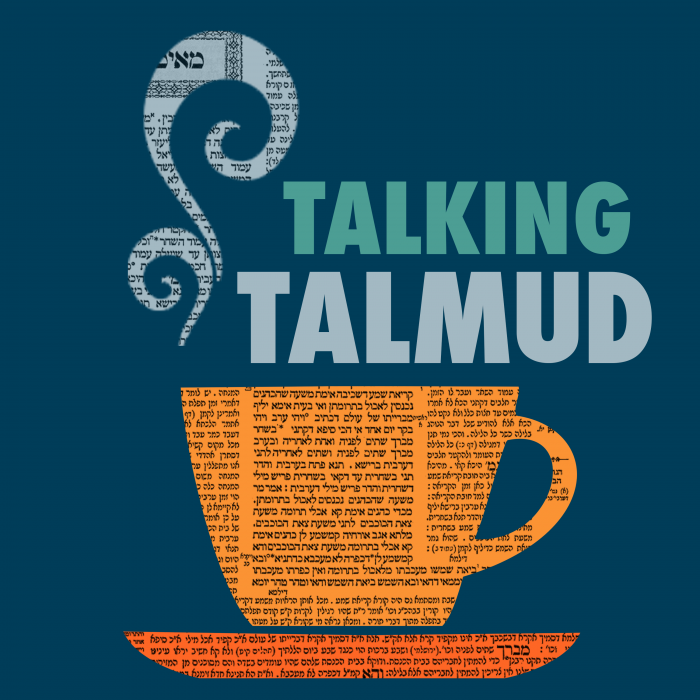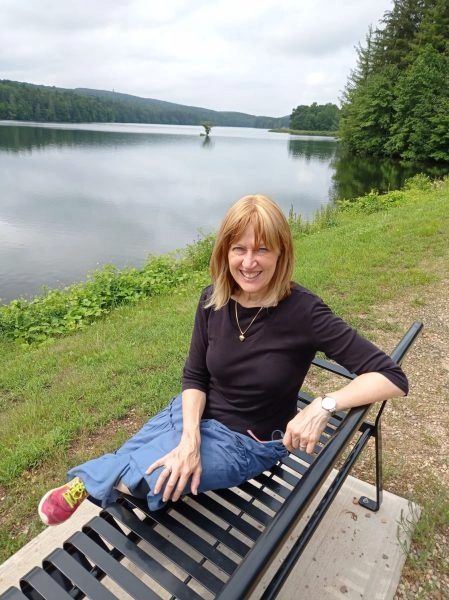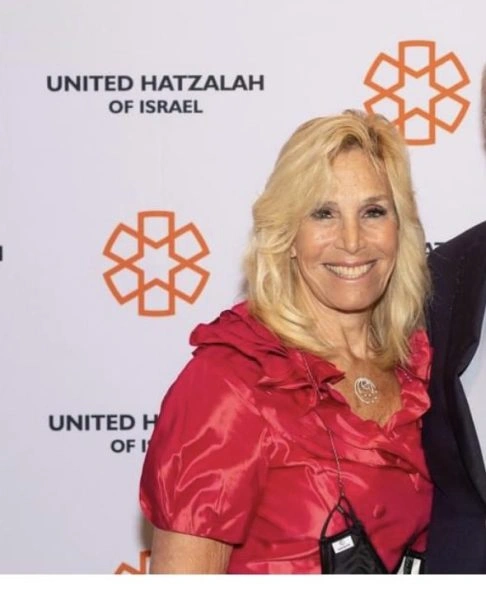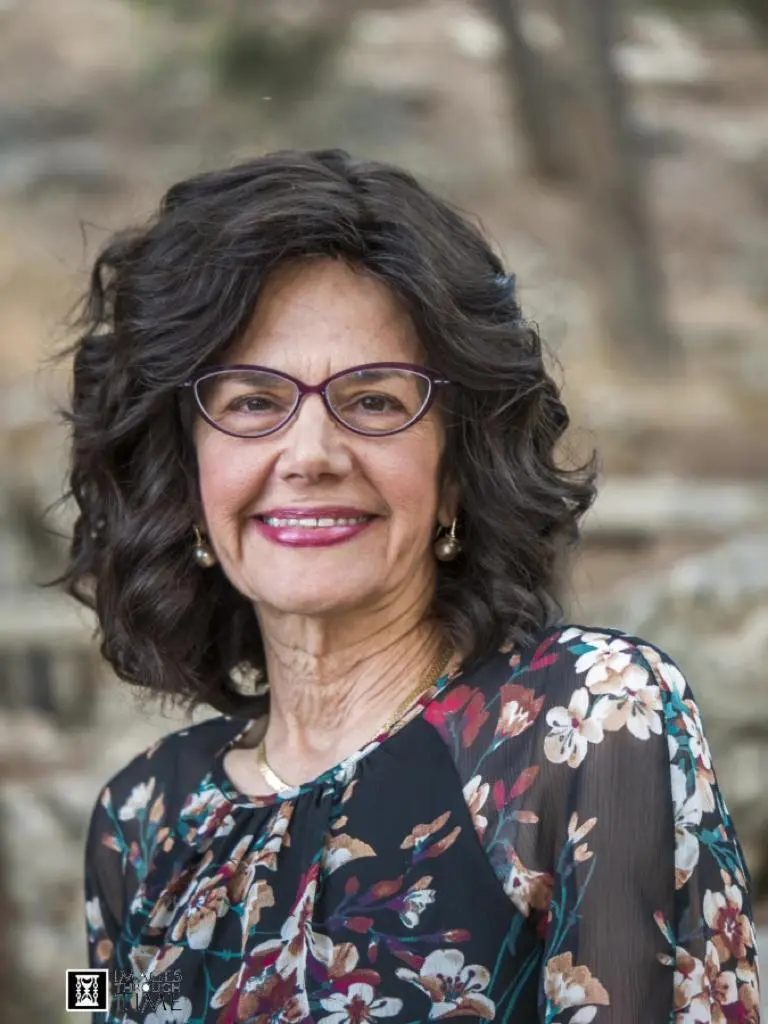Yoma 16
דְּרוֹמִית מִזְרָחִית הִיא לִשְׁכָּה שֶׁהָיוּ עוֹשִׂין בָּהּ לֶחֶם הַפָּנִים. מִזְרָחִית צְפוֹנִית — בָּהּ גָּנְזוּ בֵּית חַשְׁמוֹנַאי אַבְנֵי מִזְבֵּחַ שֶׁשִּׁקְּצוּם מַלְכֵי גוֹיִם. צְפוֹנִית מַעֲרָבִית — בָּהּ יוֹרְדִין לְבֵית הַטְּבִילָה. אָמַר רַב הוּנָא: מַאן תָּנָא מִדּוֹת — רַבִּי אֱלִיעֶזֶר בֶּן יַעֲקֹב הִיא.
the southeast chamber in the Hall of the Hearth was the chamber in which the shewbread was prepared. The northeast chamber was the chamber in which the Hasmoneans sequestered the altar stones that were desecrated by the gentile kings when they sacrificed idolatrous offerings. The northwest chamber was the chamber in which the priests descended through tunnels to the Hall of Immersion. There is a contradiction between the sources with regard to the location of the Chamber of the Lambs. Rav Huna said: Who is the tanna who taught the mishnayot in tractate Middot? It is Rabbi Eliezer ben Ya’akov, who has a different opinion with regard to this matter.
דִּתְנַן: עֶזְרַת נָשִׁים הָיְתָה אוֹרֶךְ מֵאָה וּשְׁלֹשִׁים וְחָמֵשׁ עַל רוֹחַב מֵאָה וּשְׁלֹשִׁים וְחָמֵשׁ, וְאַרְבַּע לְשָׁכוֹת הָיוּ בְּאַרְבַּע מִקְצוֹעוֹתֶיהָ, וּמֶה הָיוּ מְשַׁמְּשׁוֹת? דְּרוֹמִית מִזְרָחִית — הִיא הָיְתָה לִשְׁכַּת הַנְּזִירִים, שֶׁשָּׁם נְזִירִים מְבַשְּׁלִים אֶת שַׁלְמֵיהֶן וּמְגַלְּחִין שְׂעָרָן וּמְשַׁלְּחִין תַּחַת הַדּוּד. מִזְרָחִית צְפוֹנִית — הִיא הָיְתָה לִשְׁכַּת דִּיר הָעֵצִים, שֶׁשָּׁם כֹּהֲנִים בַּעֲלֵי מוּמִין עוֹמְדִין וּמַתְלִיעִין בְּעֵצִים, שֶׁכׇּל עֵץ שֶׁיֵּשׁ בּוֹ תּוֹלַעַת פָּסוּל לְגַבֵּי מִזְבֵּחַ.
As we learned in a mishna in tractate Middot: The dimensions of the women’s courtyard were a length of 135 cubits by a width of 135 cubits, and there were four chambers in its four corners. And what purpose did these chambers serve? The southeast chamber was the Chamber of the Nazirites, as there the nazirites cook their peace-offerings and shave their hair and cast it in the fire to burn beneath the pot in which the peace-offering was cooked, as the Torah instructs (see Numbers 6:18). The northeast chamber was the Chamber of the Woodshed, where blemished priests, who are disqualified for any other service, stand and examine the logs to determine if they were infested by worms, as any log in which there are worms is disqualified for use on the altar.
צְפוֹנִית מַעֲרָבִית — הִיא הָיְתָה לִשְׁכַּת הַמְצוֹרָעִין. מַעֲרָבִית דְּרוֹמִית, אָמַר רַבִּי אֱלִיעֶזֶר בֶּן יַעֲקֹב: שָׁכַחְתִּי מֶה הָיְתָה מְשַׁמֶּשֶׁת. אַבָּא שָׁאוּל אוֹמֵר: בָּהּ הָיוּ נוֹתְנִין יַיִן וָשֶׁמֶן, וְהִיא הָיְתָה נִקְרֵאת ״לִשְׁכַּת בֵּית שְׁמָנַיָּא״.
The northwest chamber was the Chamber of the Lepers, where lepers would immerse for purification. With regard to the southwest chamber, Rabbi Eliezer ben Ya’akov said: I forgot what purpose it would serve. Abba Shaul says: They would place wine and oil there for the meal-offerings and libations, and it was called the Chamber of the House of Oils. From this mishna it may be inferred that the tanna who taught the mishnayot in tractate Middot is Rabbi Eliezer ben Ya’akov, as that is why the mishna finds it necessary to mention that he forgot the purpose of one of the chambers.
הָכִי נָמֵי מִסְתַּבְּרָא דְּרַבִּי אֱלִיעֶזֶר בֶּן יַעֲקֹב הִיא, דִּתְנַן: כׇּל הַכְּתָלִים שֶׁהָיוּ שָׁם הָיוּ גְּבוֹהִין, חוּץ מִכּוֹתֶל מִזְרָחִי, שֶׁהַכֹּהֵן הַשּׂוֹרֵף אֶת הַפָּרָה עוֹמֵד בְּהַר הַמִּשְׁחָה וּמְכַוֵּון וְרוֹאֶה כְּנֶגֶד פִּתְחוֹ שֶׁל הֵיכָל בִּשְׁעַת הַזָּאַת הַדָּם.
So too, it is reasonable to conclude that the mishnayot in tractate Middot are in accordance with the opinion of Rabbi Eliezer ben Ya’akov, as we learned in a mishna there: All the walls that were there surrounding the Temple Mount were high except for the Eastern Wall, as the priest who burns the red heifer stands on the Mount of Olives, where the red heifer was slaughtered and burned, and directs his attention and looks toward the entrance of the Sanctuary when he sprinkles the blood.
וּתְנַן: כׇּל הַפְּתָחִים שֶׁהָיוּ שָׁם גּוֹבְהָן עֶשְׂרִים אַמָּה וְרוֹחְבָּן עֶשֶׂר אַמּוֹת. וּתְנַן: לִפְנִים מִמֶּנּוּ סוֹרֵג. וּתְנַן: לִפְנִים מִמֶּנּוּ הַחֵיל עֶשֶׂר אַמּוֹת, וּשְׁתֵּים עֶשְׂרֵה מַעֲלוֹת הָיוּ שָׁם, רוּם מַעֲלָה חֲצִי אַמָּה וְשִׁילְחָהּ חֲצִי אַמָּה.
The Gemara seeks the opinion according to which this would be feasible. And we learned in a mishna: All the entrances that were there in the Temple were twenty cubits high and ten cubits wide. And we learned in a different mishna describing the layout of the Temple: Inside the eastern wall of the Temple Mount was a latticed gate. And we learned in a different mishna: Inside the latticed gate was the rampart, which was an elevated area ten cubits wide. In that area there were twelve stairs; each stair was half a cubit high and half a cubit deep, for a total ascent of six cubits.
חֲמֵשׁ עֶשְׂרֵה מַעֲלוֹת עוֹלוֹת מִתּוֹכָהּ, הַיּוֹרְדוֹת מֵעֶזְרַת יִשְׂרָאֵל לְעֶזְרַת נָשִׁים, רוּם מַעֲלָה חֲצִי אַמָּה וְשִׁילְחָהּ חֲצִי אַמָּה. וּתְנַן: בֵּין הָאוּלָם וְלַמִּזְבֵּחַ עֶשְׂרִים וּשְׁתַּיִם אַמָּה, וּשְׁתֵּים עֶשְׂרֵה מַעֲלוֹת הָיוּ שָׁם, רוּם מַעֲלָה חֲצִי אַמָּה וְשִׁילְחָהּ חֲצִי אַמָּה.
In addition, fifteen stairs ascend from within the women’s courtyard and descend from the Israelite courtyard to the women’s courtyard. Each stair was half a cubit high and half a cubit deep, for an additional ascent of seven and a half cubits. The total height of both staircases together was thirteen and a half cubits. And we learned in that mishna: The area between the Entrance Hall and the altar was twenty-two cubits wide, and there were twelve stairs in that area. Each stair was half a cubit high and half a cubit deep, for an additional ascent of six cubits and a total height of nineteen and a half cubits.
וּתְנַן, רַבִּי אֱלִיעֶזֶר בֶּן יַעֲקֹב אוֹמֵר: מַעֲלָה הָיְתָה שָׁם וּגְבוֹהָ אַמָּה, וְדוּכָן נָתוּן עָלֶיהָ, וּבוֹ שָׁלֹשׁ מַעֲלוֹת שֶׁל חֲצִי חֲצִי אַמָּה.
And we learned in that mishna that Rabbi Eliezer ben Ya’akov says: There was an additional stair there between the Israelite courtyard and the priests’ courtyard. That stair was one cubit high, and the platform on which the Levites stood was placed upon it and on it were three stairs, each with a height and depth of half a cubit, for a total of twenty-two cubits.
אִי אָמְרַתְּ בִּשְׁלָמָא רַבִּי אֱלִיעֶזֶר בֶּן יַעֲקֹב הִיא — הַיְינוּ דְּאִיכַּסִּי לֵיהּ פִּיתְחָא.
Granted, if you say that the mishnayot in tractate Middot are in accordance with the opinion of Rabbi Eliezer ben Ya’akov, that is how it can be understood that the entrance was concealed. The threshold of the entrance to the Sanctuary was more than twenty cubits higher than the threshold of the eastern gate of the Temple Mount. One looking through the Eastern Gate would be unable to see the entrance of the Sanctuary, because the gate was only twenty cubits high. In order to provide the priest performing the red heifer ritual on the Mount of Olives with a view of the entrance to the Sanctuary, the eastern wall had to be lowered.
אֶלָּא אִי אָמְרַתְּ רַבָּנַן, הָא אִיכָּא פַּלְגָא דְאַמְּתָא דְּמִתְחֲזֵי לֵיהּ פִּיתְחָא בְּגַוֵּויהּ!
However, if you say that the mishnayot in tractate Middot are in accordance with the opinion of the Rabbis, who do not add the two and a half cubits of the stair and the platform added by Rabbi Eliezer ben Ya’akov, isn’t there half a cubit through which the entrance can be seen? Since the threshold of the Sanctuary is only nineteen and a half cubits higher than the threshold of the gate, the priest on the Mount of Olives could look through the eastern gate of the Temple Mount and see the bottom of the Temple entrance. There would be no need to lower the eastern wall.
אֶלָּא לָאו שְׁמַע מִינַּהּ רַבִּי אֱלִיעֶזֶר בֶּן יַעֲקֹב הִיא. רַב אַדָּא בַּר אַהֲבָה אָמַר: הָא מַנִּי — רַבִּי יְהוּדָה הִיא. דְּתַנְיָא: רַבִּי יְהוּדָה אוֹמֵר: הַמִּזְבֵּחַ מְמוּצָּע וְעוֹמֵד בְּאֶמְצַע עֲזָרָה, וּשְׁלֹשִׁים וּשְׁתַּיִם אַמּוֹת הָיוּ לוֹ,
Rather, must one not conclude from it that that the mishnayot in tractate Middot are taught by Rabbi Eliezer ben Ya’akov? Rav Adda bar Ahava said: This is not a definitive proof, and it is still possible to interpret halakhot of this tractate in a different manner. Rather, whose is that opinion that the Eastern Wall was lowered? It is the opinion of Rabbi Yehuda, as it was taught in a baraita that Rabbi Yehuda says: The altar is centered and stands in the middle of the Temple courtyard, directly aligned with the entrances of the courtyards and the Sanctuary, and it was thirty-two cubits long and thirty-two cubits wide.
עֶשֶׂר אַמּוֹת כְּנֶגֶד פִּתְחוֹ שֶׁל הֵיכָל, אַחַת עֶשְׂרֵה אַמָּה לַצָּפוֹן, וְאַחַת עֶשְׂרֵה אַמָּה לַדָּרוֹם, נִמְצָא מִזְבֵּחַ מְכֻוּוֹן כְּנֶגֶד הֵיכָל וּכְותָלָיו.
Ten of those cubits stood opposite the entrance to the Sanctuary. Eleven of those cubits were to the north of the entrance and eleven of those cubits were to the south of the entrance. It follows that the altar was aligned precisely opposite the Sanctuary and its walls. According to this opinion, since the altar was directly aligned with the entrance of the Sanctuary, it blocked the entrance. The floor of the Israelite courtyard was thirteen and a half cubits above the threshold of the Eastern Gate. Add nine cubits, which was the height of the altar, and the result is that the top of the altar was twenty-two and a half cubits higher than the threshold of the gate, rendering it impossible to see the entrance of the Sanctuary through the eastern gate of the Temple Mount. Therefore, it was necessary to lower the eastern wall to enable the priest standing on the Mount of Olives to see the entrance of the Sanctuary.
וְאִי סָלְקָא דַעְתָּךְ מִדּוֹת רַבִּי יְהוּדָה הִיא, מִזְבֵּחַ בְּאֶמְצַע עֲזָרָה מִי מַשְׁכַּחַתְּ לֵיהּ? וְהָתְנַן: כׇּל הָעֲזָרָה הָיְתָה אוֹרֶךְ מֵאָה וּשְׁמוֹנִים וָשֶׁבַע עַל רוֹחַב מֵאָה וּשְׁלֹשִׁים וְחָמֵשׁ. מִן הַמִּזְרָח לַמַּעֲרָב — מֵאָה וּשְׁמוֹנִים וָשֶׁבַע; מְקוֹם דְּרִיסַת רַגְלֵי יִשְׂרָאֵל — אַחַת עֶשְׂרֵה אַמָּה; מְקוֹם דְּרִיסַת רַגְלֵי הַכֹּהֲנִים אַחַת עֶשְׂרֵה אַמָּה; מִזְבֵּחַ — שְׁלֹשִׁים וּשְׁתַּיִם; בֵּין הָאוּלָם וְלַמִּזְבֵּחַ — עֶשְׂרִים וּשְׁתַּיִם; וְהַהֵיכָל — מֵאָה אַמָּה; וְאַחַת עֶשְׂרֵה אַמָּה אֲחוֹרֵי בֵּית הַכַּפּוֹרֶת.
And if it enters your mind to say that the mishnayot in tractate Middot are in accordance with the opinion of Rabbi Yehuda, do you find that the altar stood in the middle of the courtyard in tractate Middot? But didn’t we learn in a mishna there: The dimensions of the entire courtyard were a length of 187 cubits by a width of 135 cubits. That mishna elaborates: The length of the courtyard from east to west was 187 cubits, divided as follows: The area of access for the Israelites, known as the Israelite courtyard, was eleven cubits long. The area of access for the priests to walk and serve was eleven cubits long, and the altar itself was thirty-two cubits long. There were twenty-two cubits between the Entrance Hall and the altar, and the Sanctuary was one hundred cubits long. And there was an additional eleven cubits of space behind the Hall of the Ark Cover, the Holy of Holies, which was at the western end of the Sanctuary.
מִן הַדָּרוֹם לַצָּפוֹן — מֵאָה וּשְׁלֹשִׁים וְחָמֵשׁ; הַכֶּבֶשׁ וְהַמִּזְבֵּחַ — שִׁשִּׁים וּשְׁתַּיִם; מִן הַמִּזְבֵּחַ וְלַטַּבָּעוֹת — שְׁמוֹנֶה אַמּוֹת; מְקוֹם הַטַּבָּעוֹת — עֶשְׂרִים וְאַרְבַּע; מִן הַטַּבָּעוֹת לַשֻּׁלְחָנוֹת — אַרְבַּע; מִן הַשֻּׁלְחָנוֹת לַנַּנָּסִין — אַרְבַּע; מִן הַנַּנָּסִין לְכוֹתֶל עֲזָרָה — שְׁמוֹנֶה אַמּוֹת; וְהַמּוֹתָר, בֵּין הַכֶּבֶשׁ וְלַכּוֹתֶל, וּמְקוֹם הַנַּנָּסִין.
The Gemara provides the dimensions of the Temple’s width from south to north, a total of 135 cubits. The ramp and the altar together were sixty-two cubits. The ramp and altar were each thirty-two cubits long, but two cubits of the upper part of the altar were subsumed in the base and ledge surrounding the altar. There were eight cubits from the altar to the rings to the north of the altar, through which the heads of the sacrificial animals were placed for slaughter. The area of the rings itself was twenty-four cubits, and from the rings to the tables on which the animals were rinsed there were an additional four cubits. From the tables to the pillars on which the animals were suspended for flaying there were an additional four cubits. From the pillars to the courtyard wall there were eight cubits. The total to this point is 110 cubits. And the balance of twenty-five cubits was between the ramp and the southern wall, along with the area filled by the pillars themselves, which was not included in the above tally. This yields a total of 135 cubits.
וְאִי סָלְקָא דַּעְתָּיךְ מִדּוֹת רַבִּי יְהוּדָה הִיא — מִזְבֵּחַ בְּאֶמְצַע עֲזָרָה מִי מַשְׁכַּחַתְּ לֵיהּ? הָא רוּבָּא דְמִזְבֵּחַ בְּדָרוֹם קָאֵי!
And if it enters your mind to say that the mishnayot in tractate Middot are in accordance with the opinion of Rabbi Yehuda, do you find the altar in the middle of the courtyard? Most of the altar stands in the southern part of the courtyard.





















